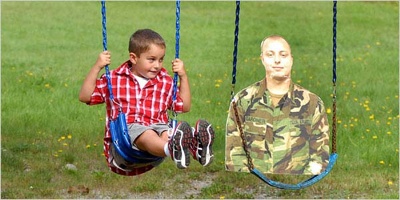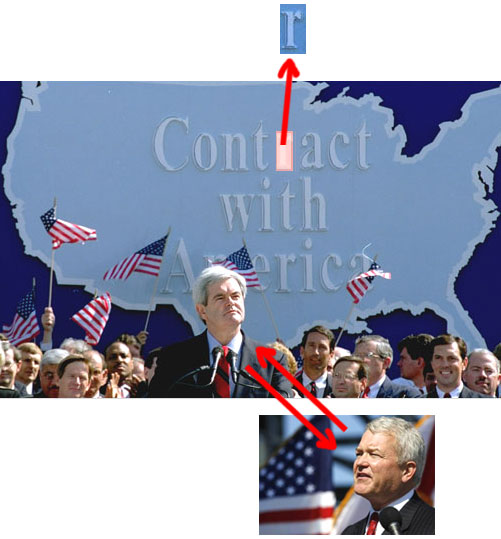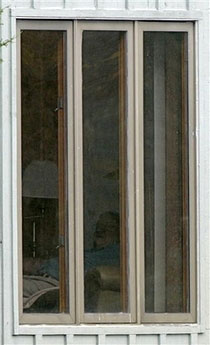Notes
That's My Dad
I’d like to welcome Dennis Dunleavy to BAGnewsNotes as a guest blogger.
Dennis is a Professor of Communications at Southern Oregon University with an expertise in visual journalism and digital media. Prior to joining academia, he had a twenty-year career as a photojournalist and correspondent.
While my style is to take a more political or psychological approach to interpreting a photograph, Dennis’ interest has to do with the shifting media role of visual presentation and messaging, along with the social, cultural and moral questions that come into play. Given these complementary interests, I believe Dennis’ involvement will enhance this site as a vital source for the understanding of pictorial news and visual politics. As well or better, I believe he shares the same good instinct for what’s interesting, and what’s happening between the point and the view, as does The BAG.
by Dennis Dunleavy
They’re called Flat Daddies and Mommies — life-size cardboard cutouts of soldiers serving overseas.
In an effort to ward off the pangs of loneliness, families of military personnel deployed to the Middle East have resorted to hauling around the likenesses of their loved ones. Flat Daddies and Mommies, usually poster-sized headshots mounted on foam board and supplied by National Guard units, have been seen at soccer games, weddings, and even wrapped in blankets on the couch watching television.
In the picture, the son smiles and looks to Flat Daddy the way sons do. It’s a tender, almost whimsical moment. And then reality sets in.
What does this picture mean if mommy gets lonely while Flat Daddy is away?
What does this picture mean if Flat Daddy never comes home?
The novelty of the Flat Daddy began shortly after the start of the Iraq conflict, but the trend has been catching on in recent weeks, especially with all the media attention.
During a war, photographs have always served as treasured reminders of those left on both sides of the front lines, but the latest fixation on families carrying life-size portable papas and mamas in the trunk strikes a tender, much more political nerve.
According to the White House, “Since September 11th, more than 243,000 members of the National Guard have been mobilized for various missions in the War on Terror.”
The real emotional cost of the Iraq and Afghanistan conflicts on U.S. military personnel and their families can never be truthfully told by warm and fuzzy Flat Daddy feature stories found recently in the Boston Globe and The New York Times. The media, in typical fashion, is masking the reality and angst these families now face. In other words, the pictures and words turn tumult into triviality.
What gives this Flat Daddy picture news value is not relevancy in terms of the cost of war, but quirkiness and novelty.
What boils beneath the warm and fuzzy, feel-good, “I miss daddy or mommy” story is more alarming. The war is becoming trivialized.
Beneath the surface of a boy and his Flat Daddy is the reality that daddy exists in a liminal state. Flat Daddy is caught in the vice grip of human memory. Flat Daddy and his real-life double somewhere in the desert exist in an ominous position between ambiguity and indeterminacy — no news story can ever speak truth to this sort of power.
What appears at first a light-hearted picture of families coping with loss is in fact, a decisive and profound image of sadness and despair.
(hat tip: hbg)
(image: Linda Coan O’Kresik for The New York Times. published September 30, 2006. nyt.com)



Reactions
Comments Powered by Disqus